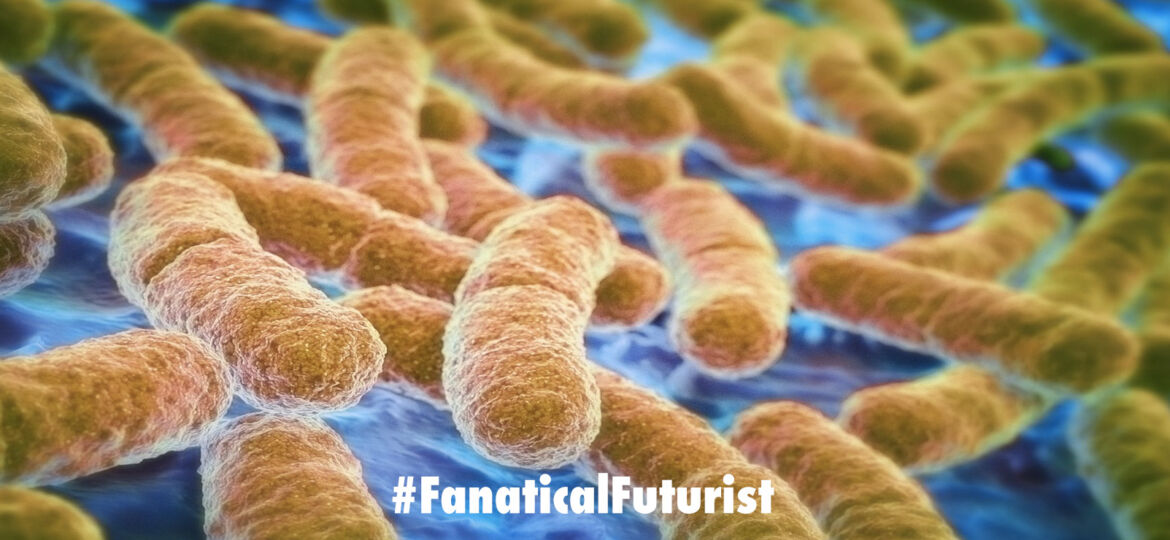
WHY THIS MATTERS IN BRIEF
Cyborg bacteria could be used to replace today’s silicon solar panels with higher efficiency, lower cost panels that help accelerate the renewable energy revolution.
Although most life on Earth relies upon photosynthesis as its sole source of energy, the process has a weak link – chlorophyll. Plants and other organisms use the wonderful green pigment to harvest sunlight during photosynthesis, but unfortunately, even though it’s taken billions of years to evolve photosynthesis is still rather inefficient. To that end, scientists have been searching for ways to both create new forms of artificial photosynthesis, and make natural photosynthesis even better, for example, by using genetic engineering to remove a plant’s natural sunblock that boosts its efficiency enough to boost crop yields by 15 percent or more, so both plants and people can capture and use energy from the Sun more efficiently.
Now though Kelsey Sakimoto, a researcher at Peidong Yang’s lab at the University of California Berkeley, has come up with a new alternative to natural photosynthesis by creating what he’s calling “cyborg bacteria” that were trained to cover themselves in the bacterial equivalent of tiny solar panels that are much more efficient than chlorophyll at converting sunlight into useful compounds, and that can convert sunlight, even on the cloudiest of days, into electricity.
Cyborg bacteria, the future of energy?
“Rather than rely on inefficient chlorophyll to harvest sunlight, I’ve taught bacteria how to grow and cover their bodies with tiny semiconductor nanocrystals,” Sakimoto said in a press release. “These nanocrystals are much more efficient than Chlorophyll and can be grown at a fraction of the cost of manufactured solar panels.”
To produce his cyborg bacteria, Sakimoto fed them the amino acid cysteine and the element cadmium. The bacteria then synthesised cadmium sulfide (CdS) nanoparticles, which efficiently absorb light, functioning as solar panels on the bacteria’s surfaces. The new hybrid organism, called M. thermoacetica-CdS, produces useful acetic acid from light energy, water, and Carbon Dioxide at a rate that outperforms any sources of natural photosynthesis.
Sakimoto presented his work at the 254th National Meeting and Exposition of the American Chemical Society (ACS).
Needless to say humanity is facing an ever growing need for reliable, clean alternatives to fossil fuels as we stare down the consequences of climate change and a rapidly increasing population that will need more energy than ever before.
Artificial photosynthesis isn’t a new concept, and a system that requires only sunlight and simple organic chemicals to generate renewable energy cheaply and cleanly is understandably highly desirable, but until now progress has been limited and there hasn’t been a solution good enough to warrant its commercial use.
Sakiomoto’s cyborg bacteria, however, operate at an efficiency of more than 80 percent and are both self-replicating and self-regenerating, making this a “zero waste technology” with a dizzying number of use cases – everything from energy production to being able to use solar powered genetically engineered bacteria (I never thought I’d say that!) to produce everything from drugs and biofuels to new materials.
“Once covered with these tiny solar panels, the bacteria can synthesise food, fuels, and plastics, all using solar energy,” he explained, “and they can outperform natural photosynthesis.”
While he does acknowledge that more research is needed Sakiomoto is hopefully that his cyborg bacteria could one day prove to be a viable alternative to fossil fuels, helping the world produce clean energy and lots more besides more cheaply and cleanly than ever before. After all, what could be greener than a solar powered bacteria that generates its own energy and shunts it to the electricity grid while making stuff!? Awesome!
















